The Definitive Guide To Use Line in Interior Design
13 Mins Read
January 22nd, 2024
Jump ahead to:Using Line in Interior Design
Lines are quite a simple element of interior design. Primarily, there are curvilinear lines or rectilinear lines in the interior design along with line shapes that can be beautifully arranged in vertical, horizontal or diagonal patterns. Line in interior design is often used to define a space, create an emotion or create different patterns.
For instance, horizontal lines create a sense of stability. Suppose we take a room with defined millwork such as a chair rail, crown moulding, wainscoting, and tall baseboards. Those horizontal lines create a feeling of timelessness, stateliness and even masculinity sometimes, thus lending the whole space a pervading sense of stability.
Line indicates the boundaries of both straight and curved surfaces. The dynamic and playful nature of diagonal lines brings in drama and movement in rooms with round staircases or modern fabric patterns. On the other hand, curved lines are more often found in windows, furniture, and arched doorways.
Line in interior design is the heart of form. Its characteristics comprise straight, vertical, horizontal, diagonal and curved forms and define the shape and volume of space. Other elements of design include space, texture, form, colour, light and pattern. The right balance of all interior design elements is vital to every design scheme.
Read also – Interior Design Basic Concepts, Elements and Principles
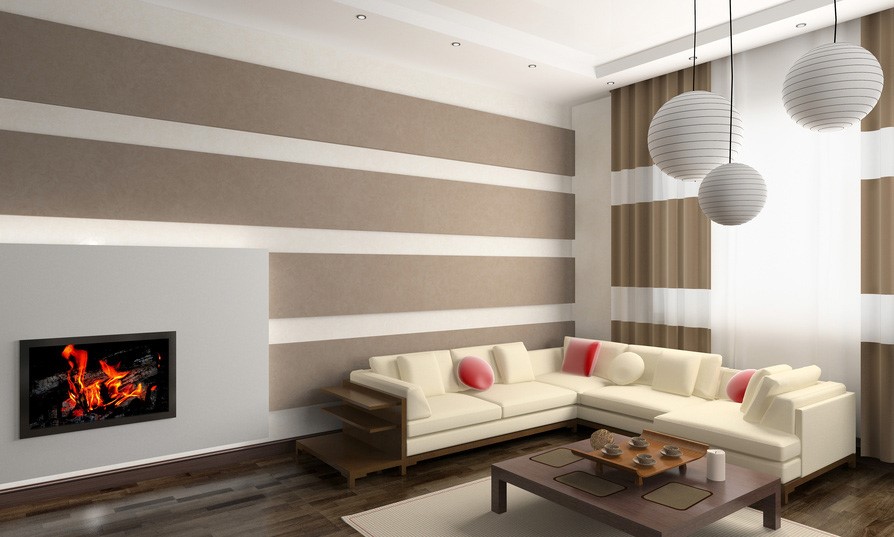
Image Credit: kaodim.com
Line in interior design is an example of less obvious elements leaving the maximum impact on overall aesthetics through their functionality. These are details that can give a design varied looks when made the focal point. As a result, a space appears longer, narrower or larger. Lines, when used thoughtfully, can really capture attention and so must be used carefully.
Here are the various types of lines in interior design that you can work with to achieve the desired look:
Straight lines feel powerful, solid and orderly. The straight-line design helps direct one’s eyes towards those positions that need to be highlighted. In addition to the illusion of space, a straight line in interior design also creates a sense of tranquillity. This is why it’s prudent to use these lines in the design of bathrooms and bedrooms. Reflect horizontal lines in these spaces by painting stripes on the walls.
Read also – 20 Best Wall Decor Ideas
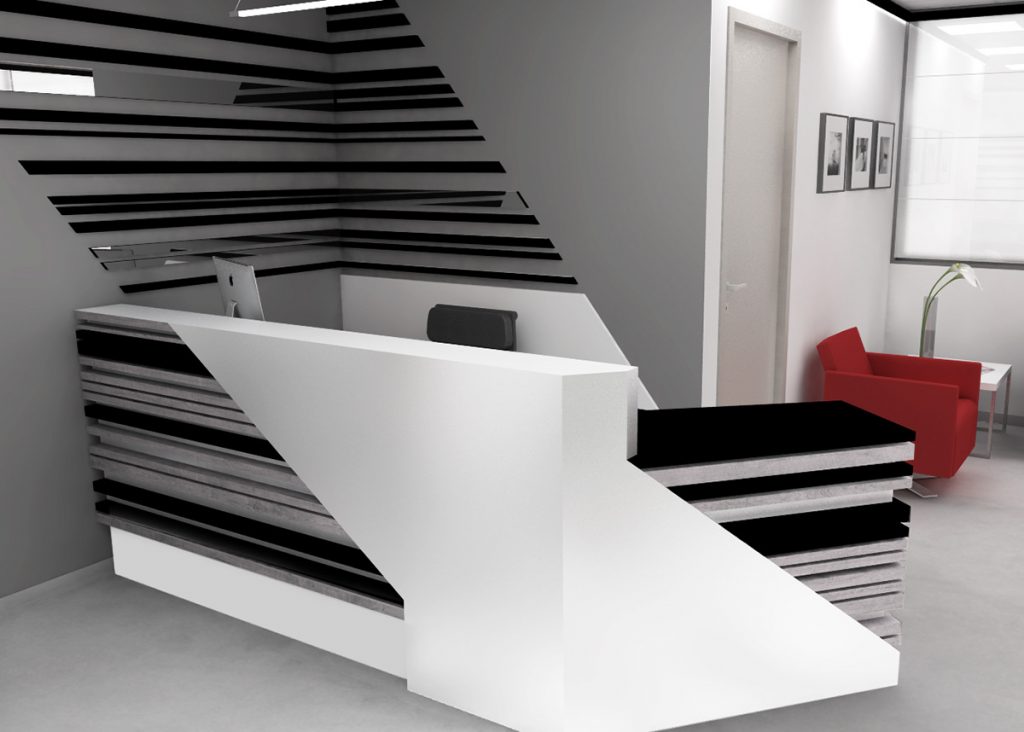


Image Credit: behance.net
Horizontal lines indicate a solid, harmonious relationship with our surroundings which, in turn, creates a peaceful and calming home decor. Long horizontal lines are known to visually expand a space, making rooms appear longer and wider, with the ceiling height seeming lower.
Hence, it’s preferable that you use them in those areas you wish to appear wider or bigger. Very often, you will find that narrow living rooms have beams installed horizontally near the ceiling to create the impression of broader space.
Read also – 30 Traditional Living Room Ideas
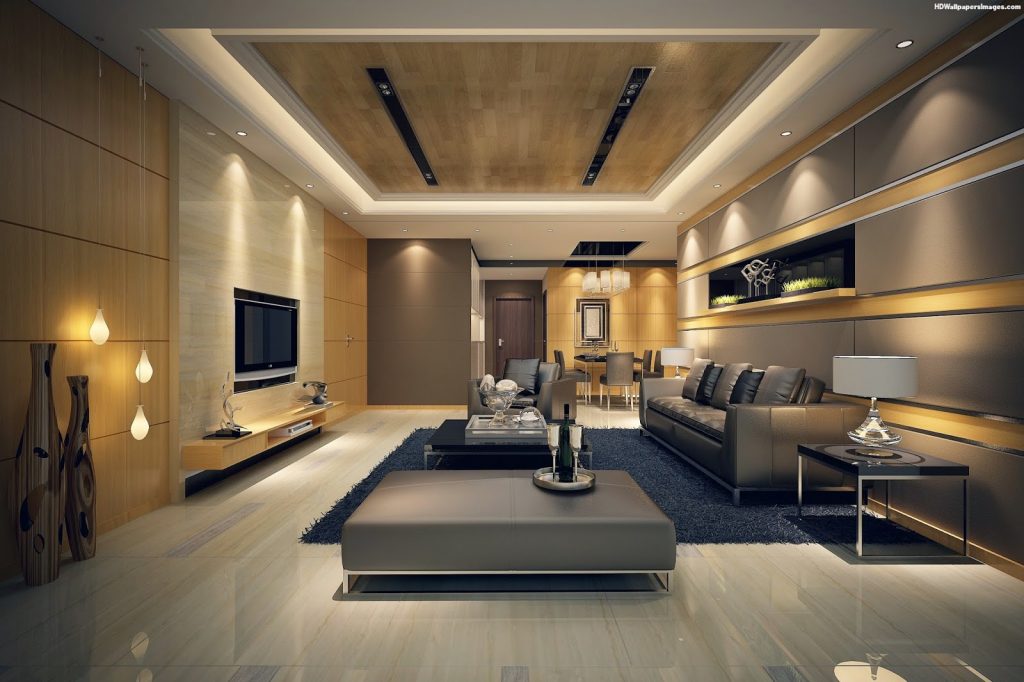


Image Credit: livinator.com
Vertical lines tend to draw the eye upwards. They are generally associated with strength, balance, stability, and elevation. Experts hypothesise that viewing vertical lines is quite unnatural as compared to viewing horizontal lines.
Moreover, vertical lines move away from our visual plane, and so, the length of a line drawn vertically is stretched, making a space appear higher. If you are working with décor details that happen to be above the natural sightlines, such as eclectic lighting fixtures or graceful architectural domes, then use vertical lines more.
Read also – 15 Tips To Choose Materials for Interior Design
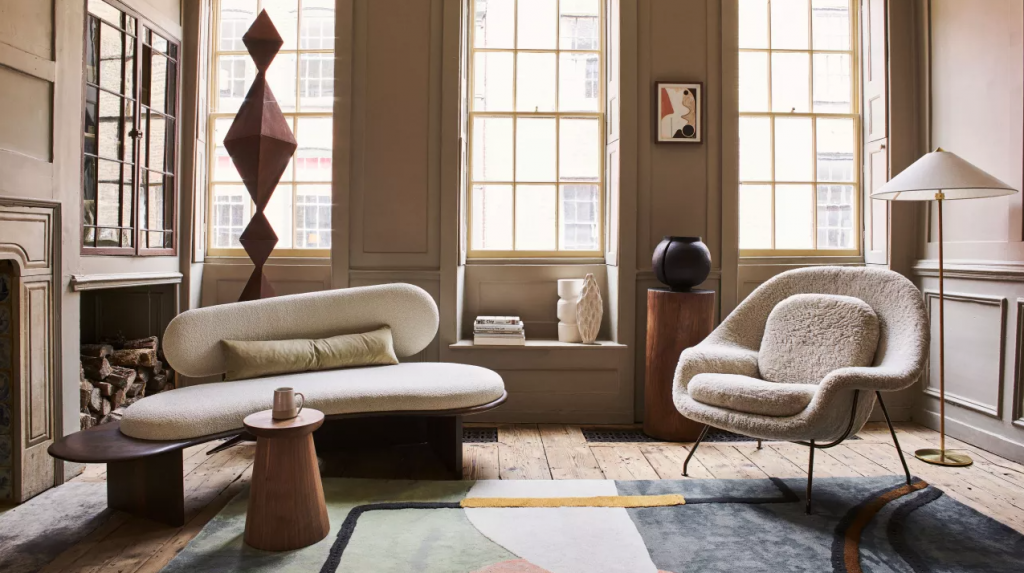


Image Credit: homesandgardens.com
In interior design, diagonal lines spur a sense of movement and energy. It’s best that you use these in activity spaces, for example, in the kids’ playroom, the kitchen or the living room. Apart from using painted lines, you can also reflect these in the furniture and fixtures.
Diagonals help to create more visually interesting designs than straight lines. However, going overboard with them might result in a confused look, so balance things out as far as possible.
Read also – 20 Common Interior Design Mistakes To Avoid
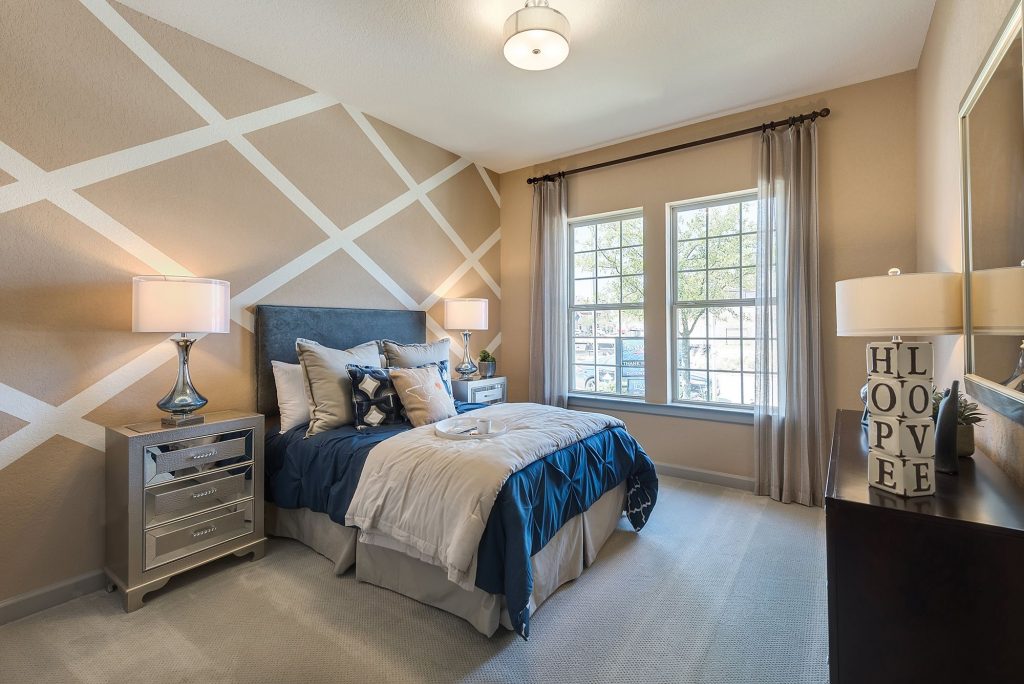


Image Credit: pinterest.com
Zig-zag lines in interior design are basically known as a chevron pattern when they make up a repeated set of these lines. They represent movement, action and energy. Their sharp edges can bring a sense of excitement to your designs.
For example, if there is a plain-looking corner in the house, use zig-zag lines to add some verve to it. Or go for obliquely shaped storage areas and open space shelves. By doing so, you can make that space look less dull and more visually interesting.
Overall, zig-zag lines can add zest and energy to interiors and serve to stimulate the eye and mind. You can use them extensively in children’s bedrooms or playrooms to complement the youthful energy. However, too many zig-zag lines can leave a frenzied and agitated effect, so strike the right balance.
Read also – Guide to Layering in Interior Design
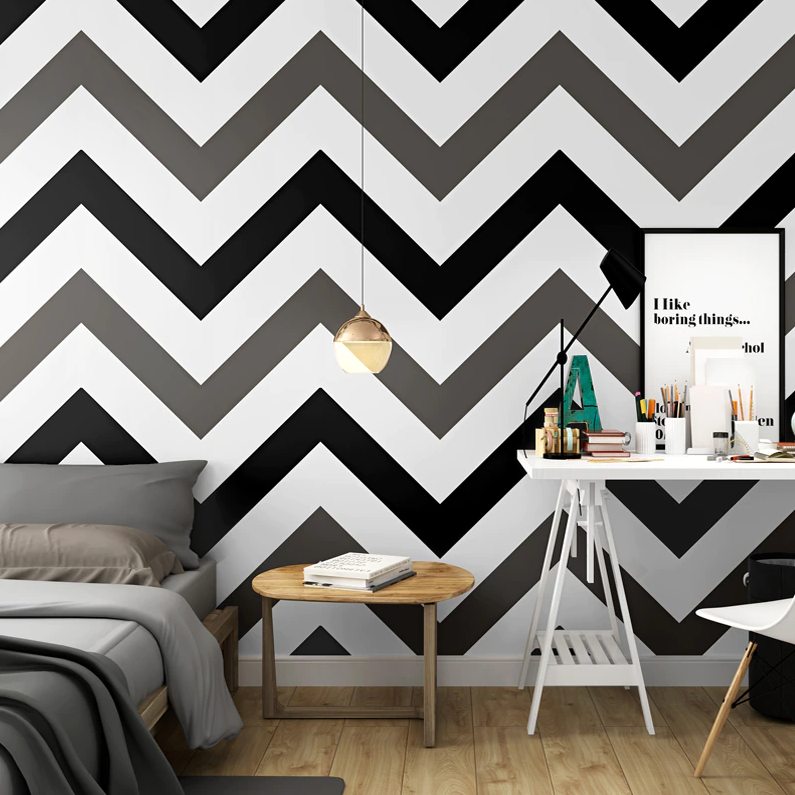


Image Credit: aliexpress.com
Circular lines provide balance and softness with a straight or diagonal line in interior design. If the walls already have diagonal stripes or ceilings have horizontal beams, then add contrast with round coffee tables, sofa sets or circular ring chandeliers to your home design. Circular lines are well-known for their softness, and so they also convey femininity. To create gender-neutral rooms, go for the right mix of circular lines.
Read also – The Definitive Guide To Space Planning In Interior Design
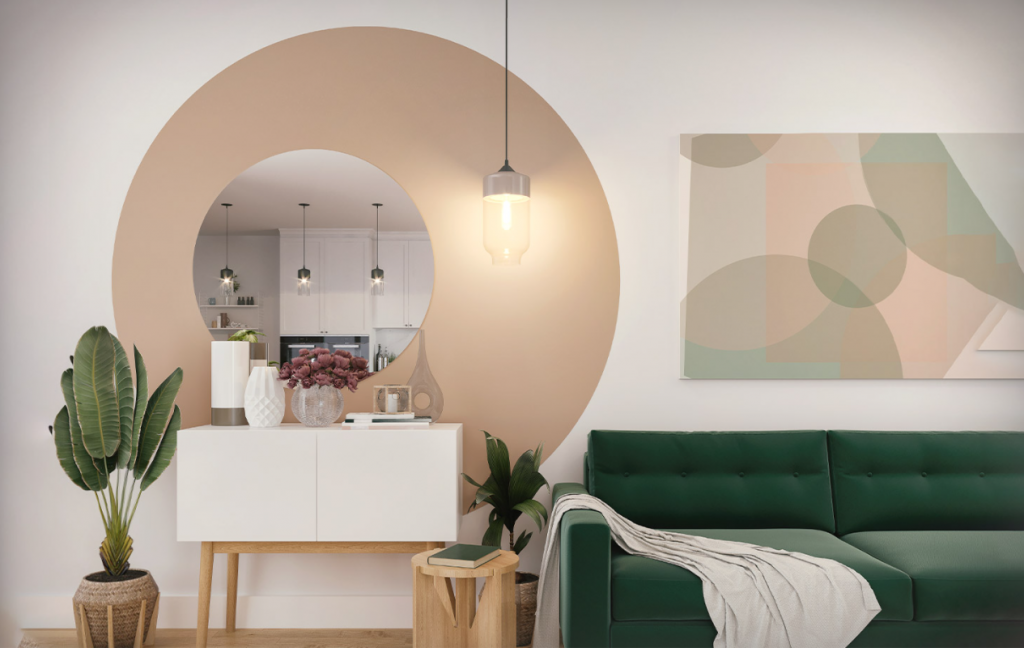


Image Credit: thespruce.com
Curved lines comprise flowing lines gently tracing a spiral. This design is mostly seen on the stairs of houses. If the steps are already fixed, you can introduce flowing lines through wallpaper patterns. These can also be used in narrow, empty hallways to add an aesthetic appeal and bring more attention to space, eliminating a sense of rigidity within that area.
Read also – 14 Types of Staircases
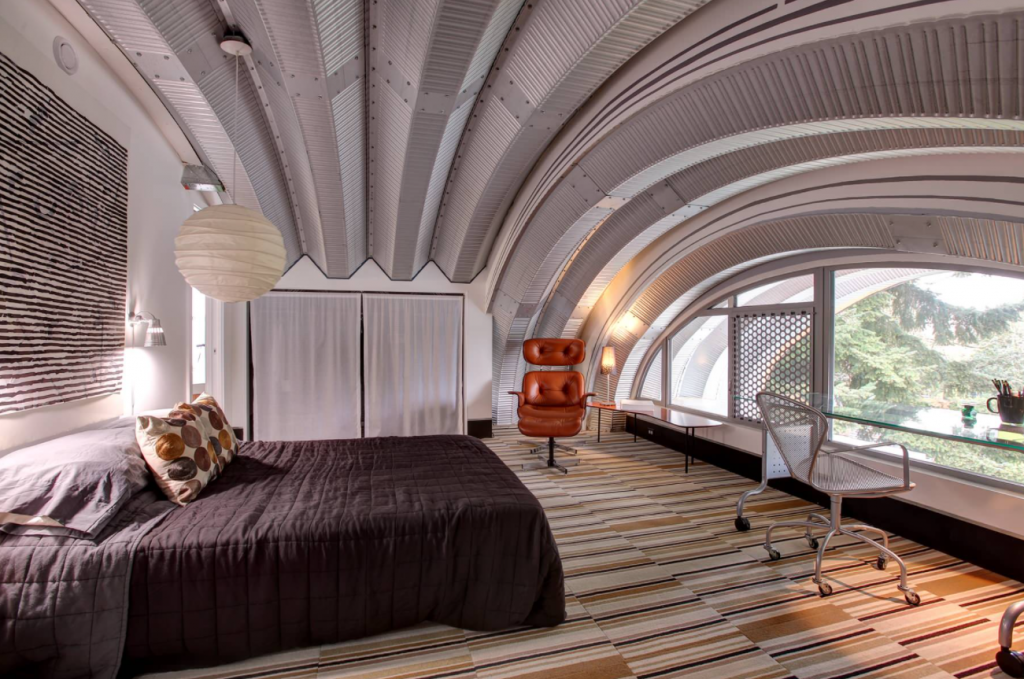


Image Credit: houzz.com
As a design element, a line in interior design can either be used alone or in conjunction with another graphic element. Lines are highly versatile and can effectively communicate emotions and information. The most essential element of design, lines can be long, short, straight or curved. Lines are also solid, thick, thin, or dashed and of variable width. The ending of a line can be blunt, ragged or curved.
The popular transitional style seen today was created by applying cleaner lines to the traditional look, which usually consists of architectural detailing and curves. Many designers have also simplified lines to define a classic design, eliminating fussiness and staying true to the original shapes. By adding sleeker lines to these transitional designs, you can achieve a more modern look.
Read also – How To Find Your Personal Interior Design Style?
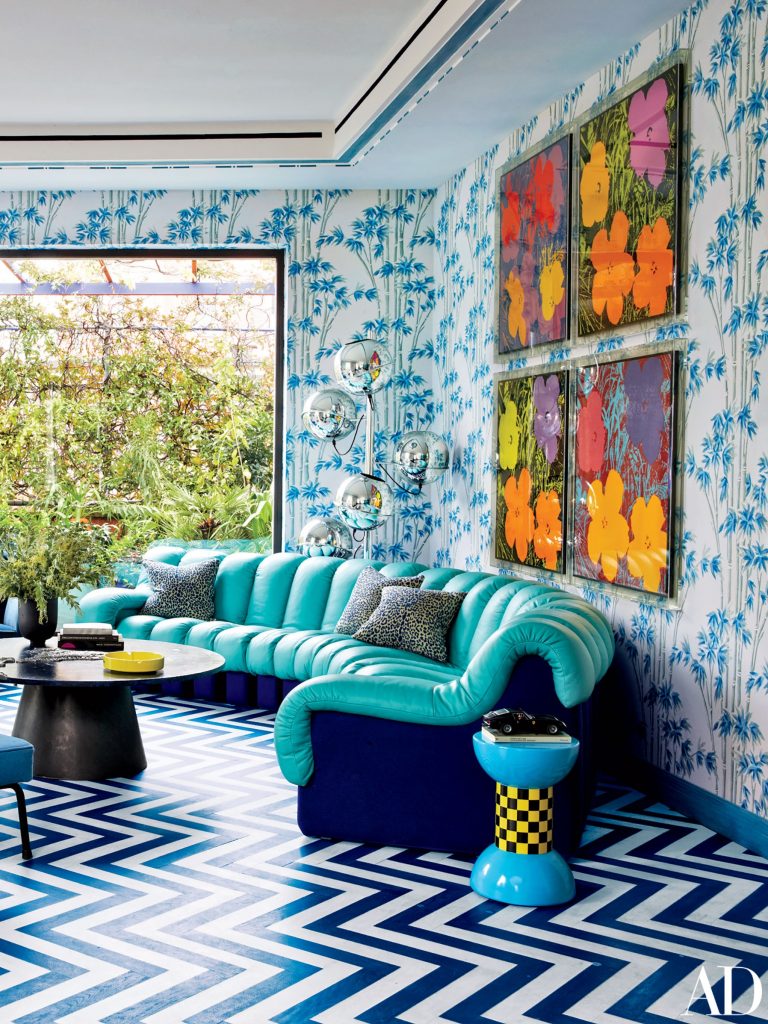


Image Credit: architecturaldigest.com
Contemporary style in interior design mainly focuses on shapes, structure and lines. Further, it comprises standard components and intense hues. On the other hand, the classical design style is known for rich colour palettes, curved lines, premium textures and dark wood.
But the one common feature between both design styles is the soft and rounded lines. Contemporary design highlights the space rather than things, while classical design is more centred on things. A blend of both can be defined as a new age definition of aesthetics in interior design, in which line has come to bear the primary role.
When decorating or redecorating a space, the composition is vital for creating a homely feel and an artistic masterpiece. The items and patterns chosen for a home can have a huge impact on the atmosphere and the emotion a room creates. For example, design plans with straight lines in interior design are considered elegant, while curved or diagonal lines give a more dynamic feel and a sense of movement.
Similarly, vertical lines in buildings can represent power and robustness. On the other hand, horizontal lines point us towards the sunrise or sunset, exuding a more serene effect. Use a blend of different styles to create an overall satisfying design. Combine patterns and placement of items to draw attention and highlight all your efforts for the interior design.



Image Credit: home-designing.com
The best interior design schemes tend to use lines in the following ways:
In cases of long, narrow rooms, how the tile flooring is placed can make or break the whole appearance of the space. Running tiles lengthwise can help make a dining room appear longer as the lines diminish in perspective. On the other hand, if you place the tiles running alongside each other, the room may look shorter but feel wider.
Use vertical lines to make the interiors appear higher. You can use them in entryways, assembly halls and living rooms. On the other hand, long horizontal lines can expand the space visually, making them seem wider or longer.
Read also – 10 Most Popular Types of Interior Design Styles
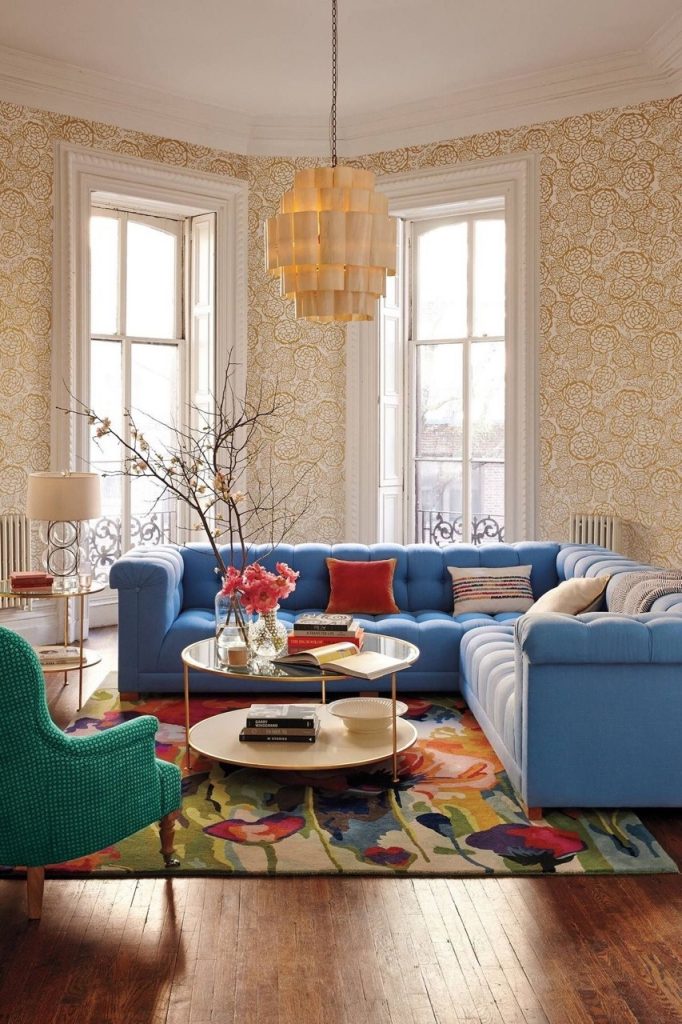


Image Credit: essenziale-hd.com
How you use lines defines a pattern. For clothes and fabrics, the patterns are often limited by the vision of the artist who creates them. But for architectural details such as tile placement, the shape must be considered.
You can also draw patterns by repeating shapes, such as using multiple square pillows on a long couch. Rhythm emanating from the use of line in interior design sets the visual movement of a room’s design. This includes maintaining lighting fixtures that serve to enhance the quality and characteristics of your design.
Read also – The Complete Guide To Use Textures in Interior Design
To make a small room feel larger, you can draw vertical lines. Hang the curtains up to the ceiling, not where the windows stop. By doing this, you will visually feel that the space has been expanded. Patterned wallpaper or painted stripes on a wall also help do the trick. For kitchen backsplashes and tile bathrooms, experts suggest that hanging rectangular subway-style tiles vertically will make these spaces appear wide and elongated.
Achieving the right balance in a room majorly relies on using both positive and negative spaces adequately. Positive space refers to the positioning of the room’s objects, such as armchairs and sofa. In contrast, negative space indicates the gaps between and the circulation space for navigating through the space. Using lines strategically in your design schemes will help you get the right balance between the positive and negative spaces in the room.
The same principles can work in reverse. Add horizontal lines with contrasting colours to scale down the appearance of a bigger room. A kitchen island consisting of various levels can make a high-ceilinged kitchen feel a lot more compact and cosier.
To decorate a large loft, many interior designers have begun using lower seating profiles for couches and side chairs, which creates a nook within a bigger space. It then becomes ‘a room within a room’ and is perfect for intimate gatherings and conversations.
Read also – 10 Best Small House Design Ideas
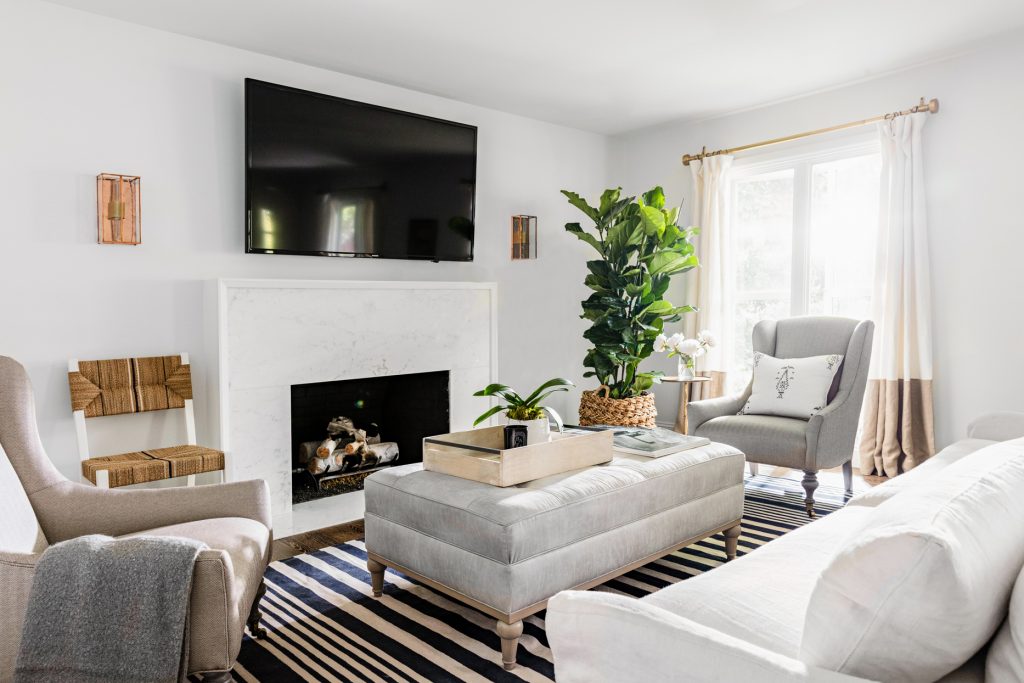


Image Credit: bhg.com
Curved lines can add a soft, feminine feel to a space and suggest movement. Most of the time, a space feels heavy if the design includes only horizontal and vertical lines. By adding curves through patterns (rugs and fabrics) or structure (furniture and accessories), you can combine multiple types of lines to bring balance to a space.
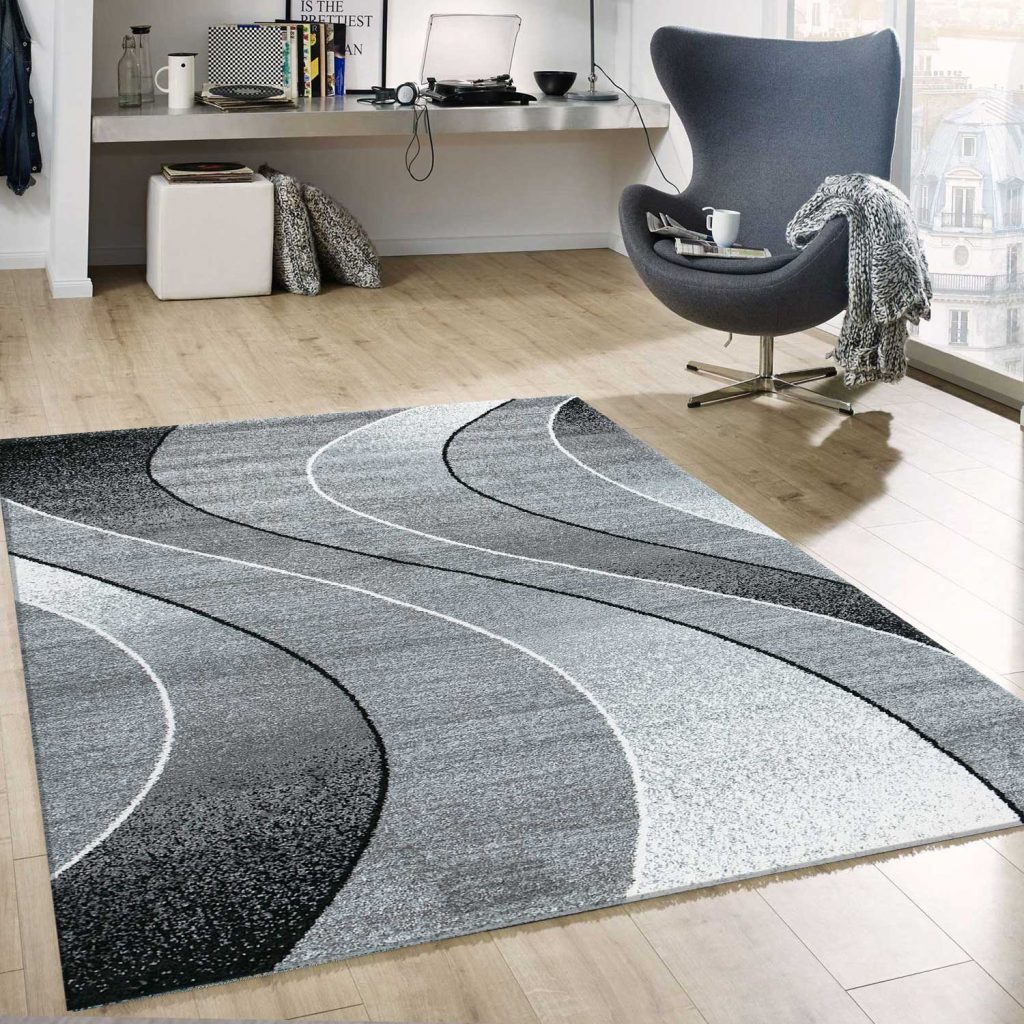


Image Credit: vimoda-homestyle.de
An uncommon but eye-catching sight, geometric patterns can add a pop to any monotone modern space. A good way for achieving unique home decor is by using more fabrics and tiles. Or you can play around with the positioning of your furniture.
Add chairs and tables with slanted legs, or go for lamps with angular lines or a tripod stand. The sofa can be placed diagonally to a wall instead of perpendicularly or parallel. Or you can build an angled kitchen island with two club chairs diagonally in relation to each other, with a dining table in between.
Read also – Importance of Accessories in Interior Design
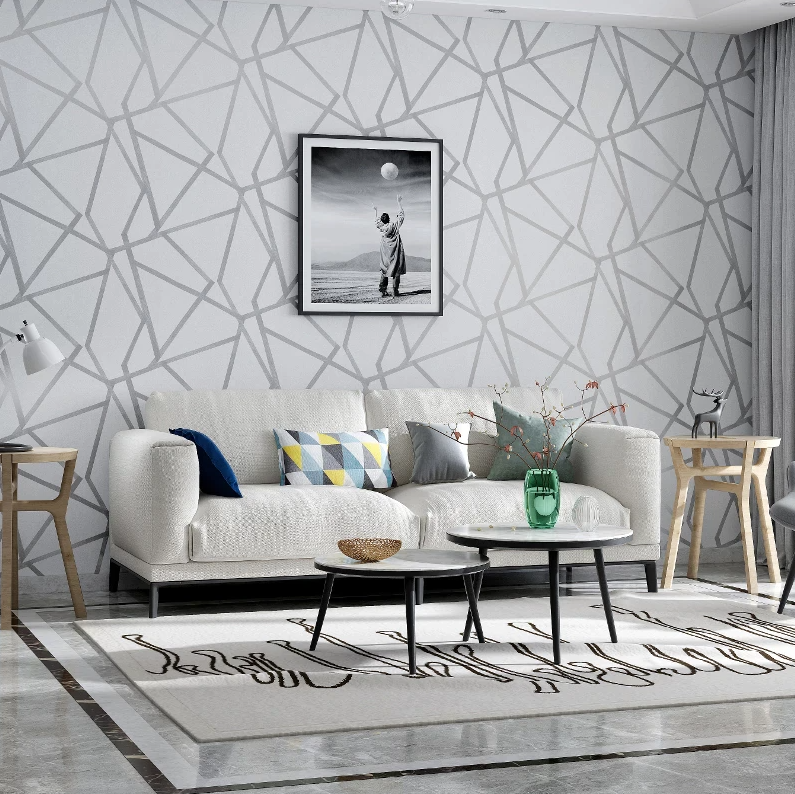


Image Credit: aliexpress.com
Using paint to create lines in the bedroom can make a space appear bigger and add more atmosphere and colour. The fundamental principles of including stripes for making a space appear larger are quite simple. Vertical stripes of any width make the walls appear taller. In contrast, narrower stripes can lend a high-ceilinged feel to any space.
On the other hand, horizontal stripes make a room and its walls appear wider than the original. It is an ideal way to incorporate more colour into a home space. You can also experiment with a statement shade without deciding on a colour or when you are unable to decide on one particular shade.
Contrasting colours make a grand statement. When you use a bright and vivid colour at the top third of a wall, it can draw the eye upwards, creating an illusion of height and width. Tonal colours must be used more subtly, aligned with the latest trends. Painted panelling is another stylish way to use lines in interior design to create a timeless feel in the bedroom.
Read also – Top 20 Neutral Paint Colors for Interiors
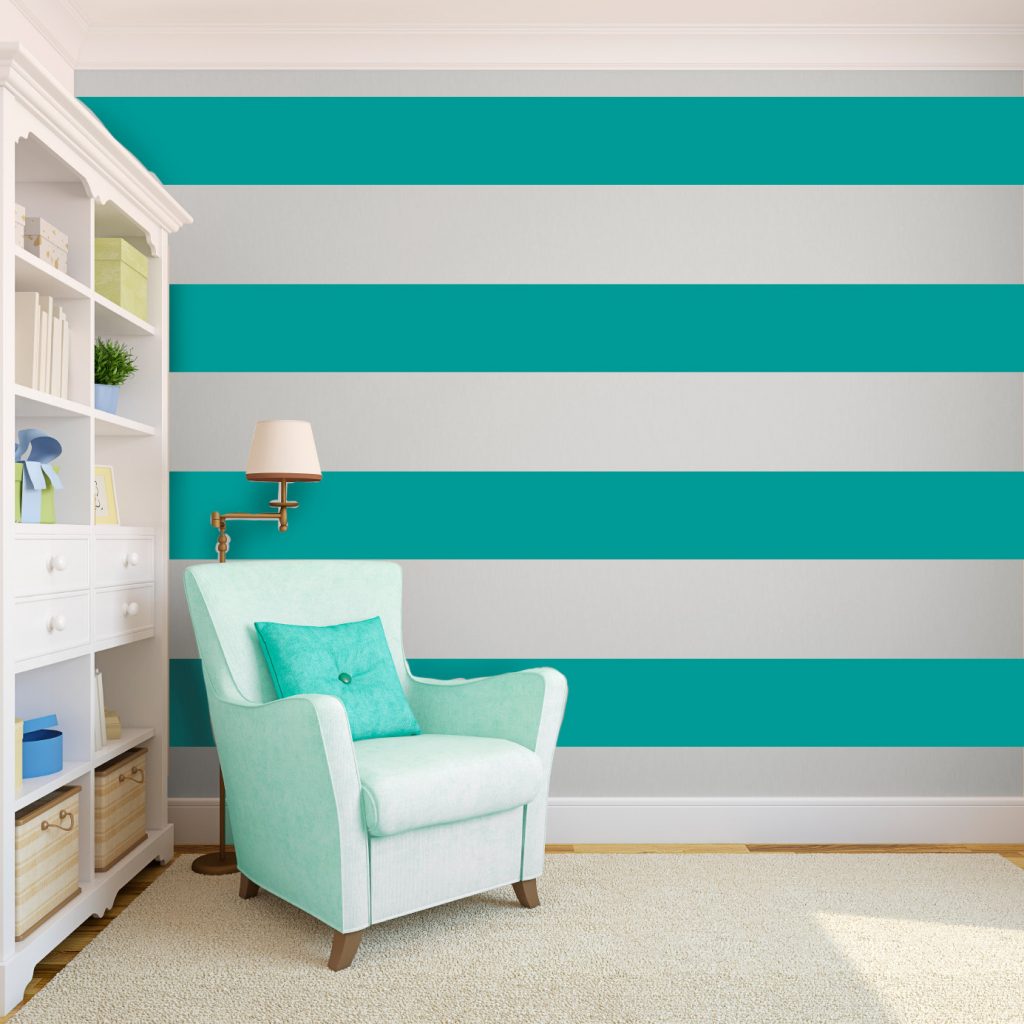


Image Credit: homedit.com
All dynamic lines, such as curves, chevrons and zig-zags, are a smarter and easy way for bringing a living room to life. Curved sofa sets are always an intelligent and elegant choice to go for. Teamed with a round table, they can soften the vertical lines of full-height curtains and wall panelling to make the room more vibrant.
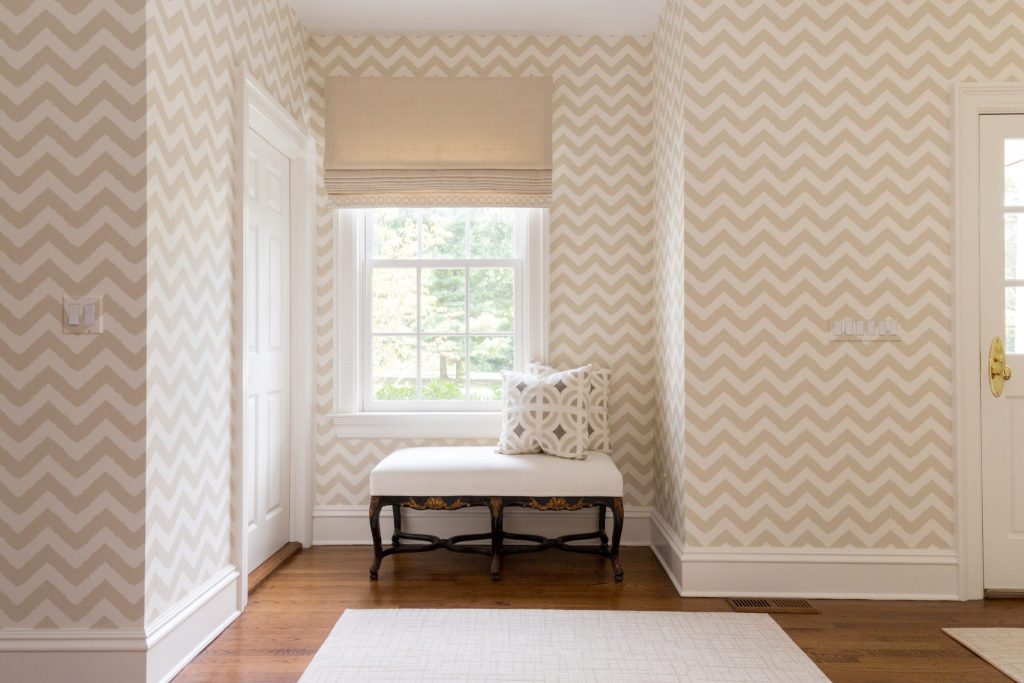


Image Credit: chairish.com
Overall, line in interior design is considered one of those important details that can make or break your home decoration and design. Hence, do not rank it last in your list of priorities when planning an interior design. Remember to use them wisely. Consider the styles your clients seek – traditional, modern, masculine or feminine — and then use appropriate lines to achieve that particular look.
How lines fill a room will tremendously affect the space’s look and feel. You need to strike the right balance and incorporate the desired style through your lines. You can also combine different types of lines within your design scheme to make a room interesting.
Foyr Neo is a one-stop-shop for all your design needs. The multifaceted design software has so many features to choose from that it makes it easier to visualize your design ideas more effectively.
Furthermore, it doesn’t take up a whole lot of space due to its incredible cloud computing feature. It saves time and money on licensing. Anyone can create absolutely remarkable home designs with these design tools. Foyr Neo is now available for a 14-day free trial, allowing you to explore the potential of infinite creation.
Using Foyr Neo is as easy as 1, 2, 3. First, upload a floor plan or create one from scratch. Then drag and drop from over 60K 3D models to fill your rooms. Lastly, just set the shot and let the AI create stunning 4K renders for you in less than 10 minutes.
Start your 14-day free trial

No Credit Card Or Download Required


Specially built for Interior Designers



